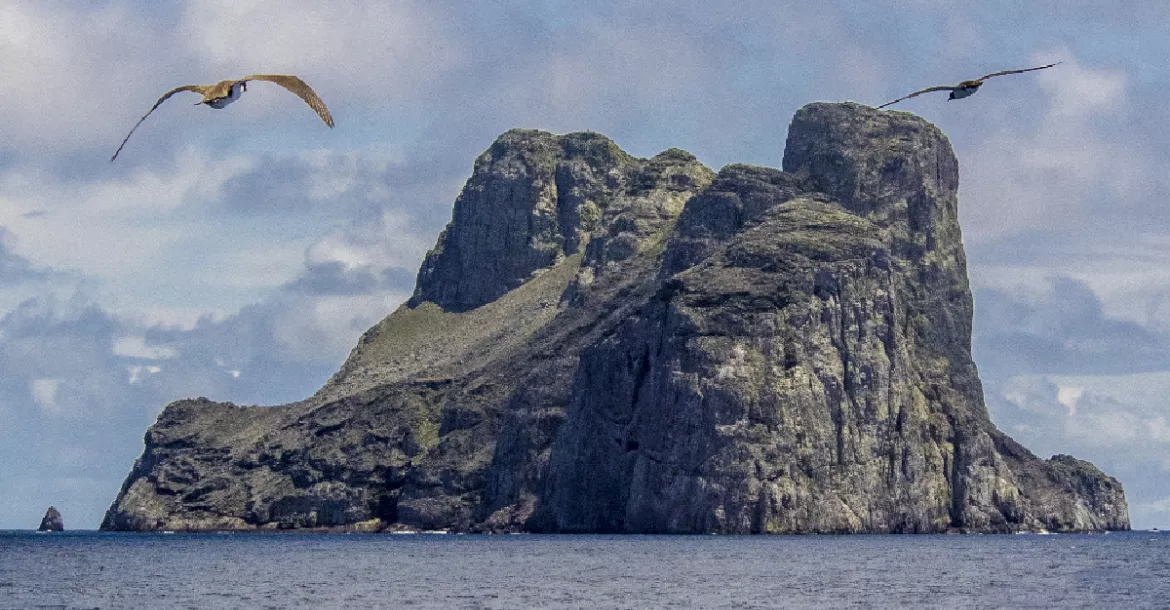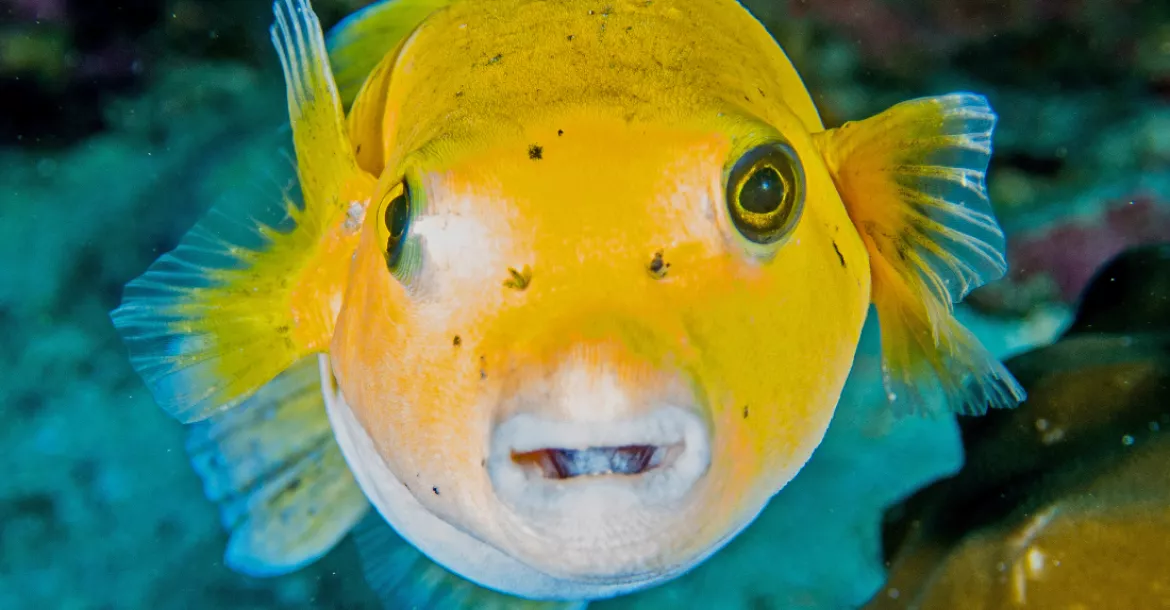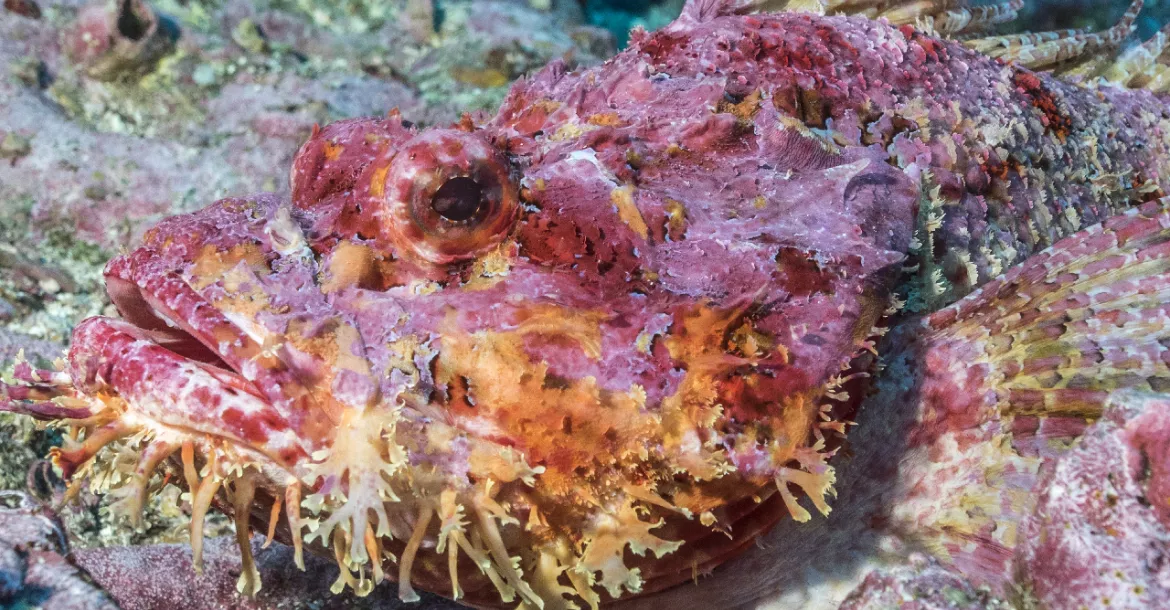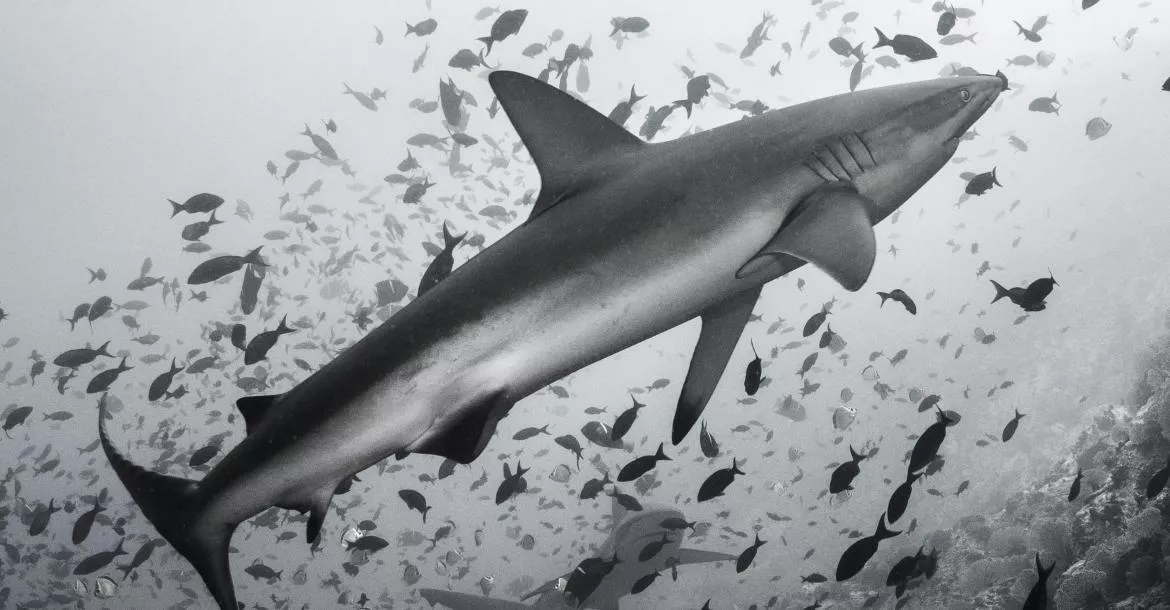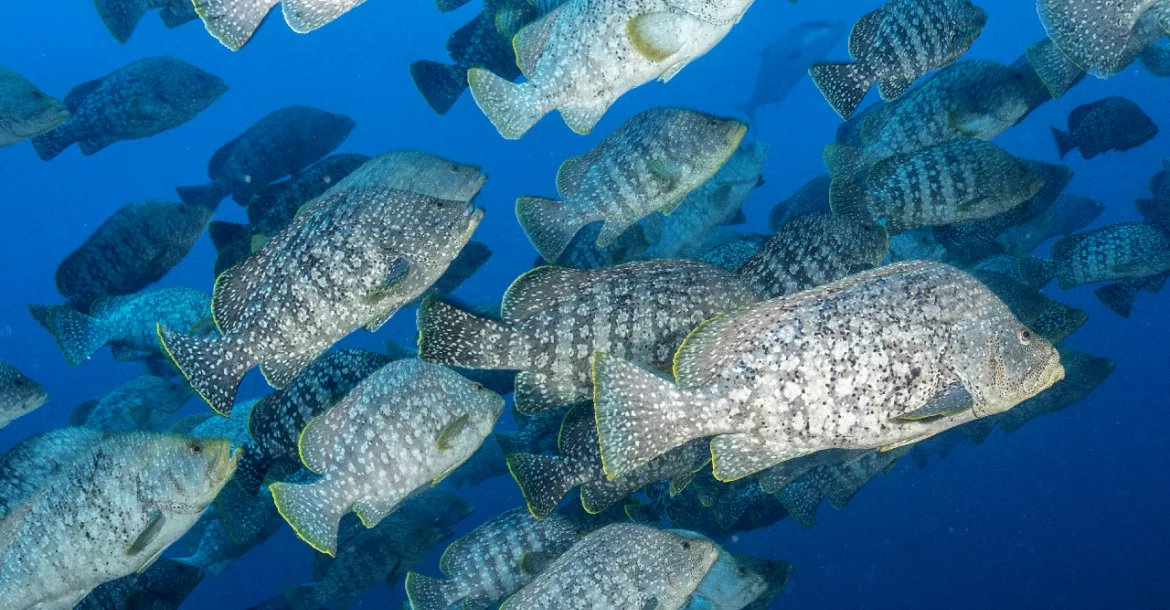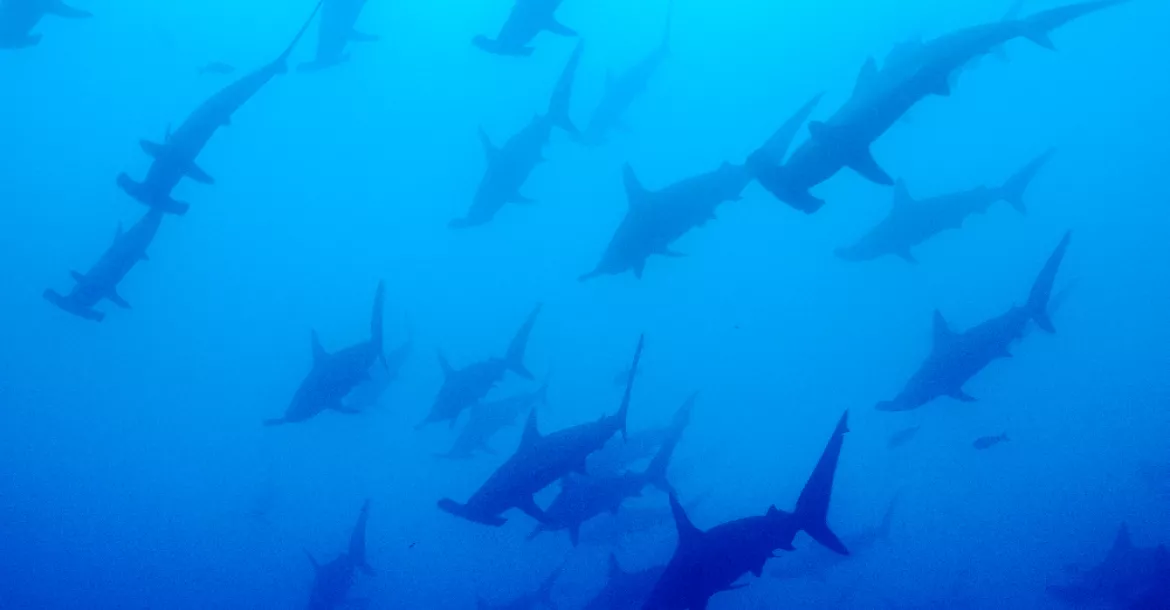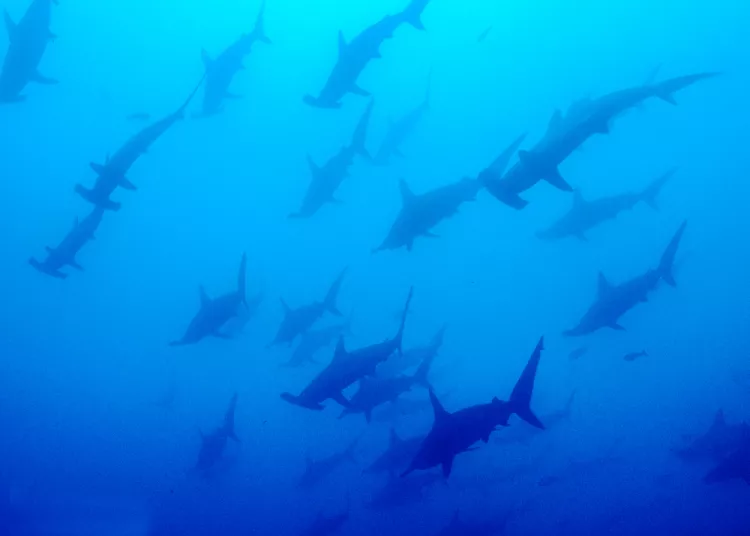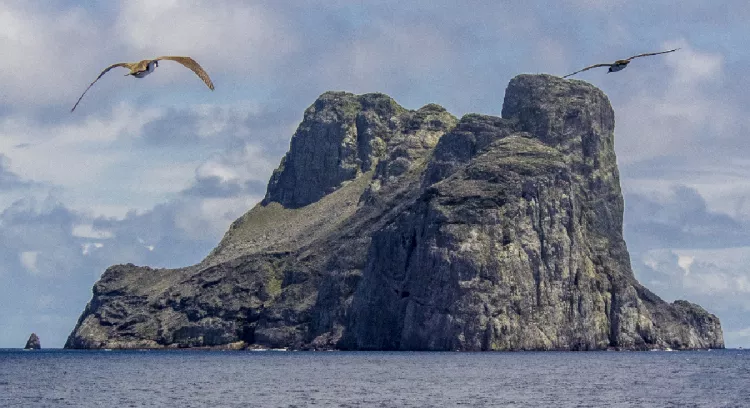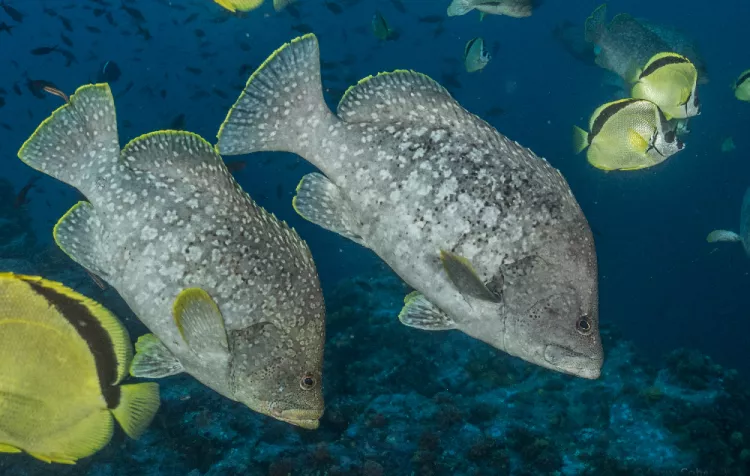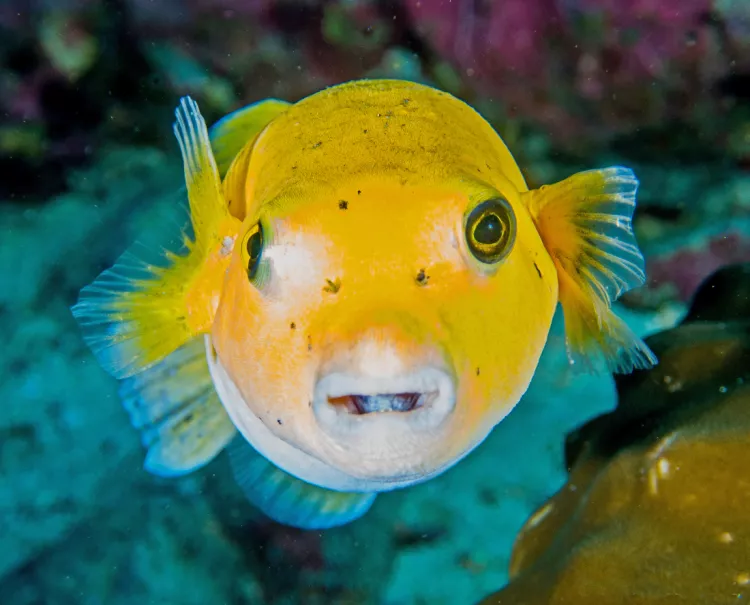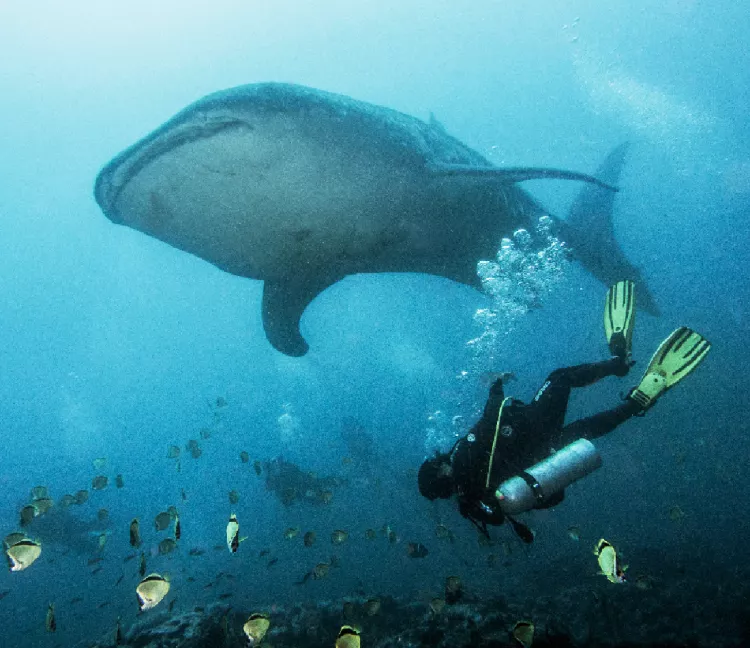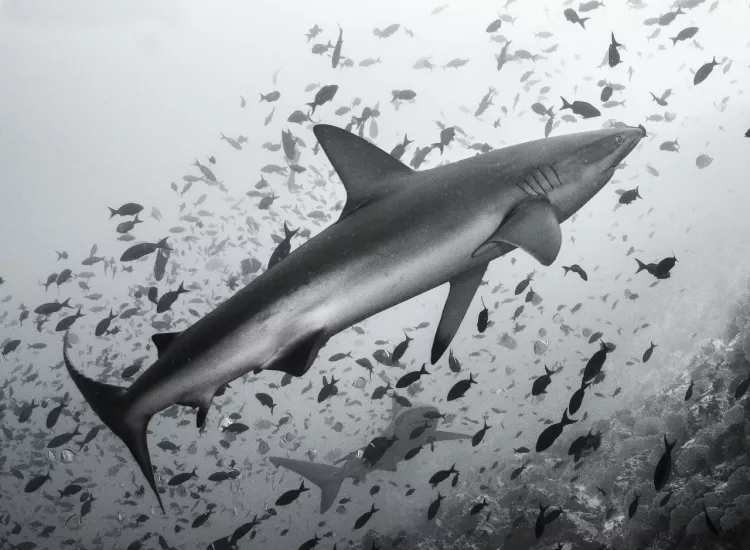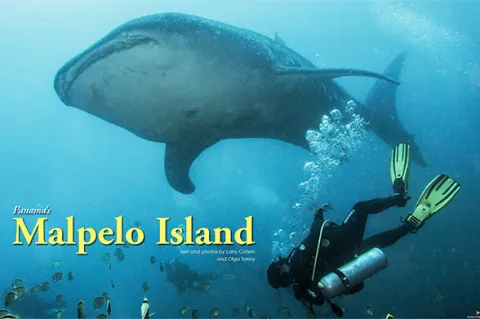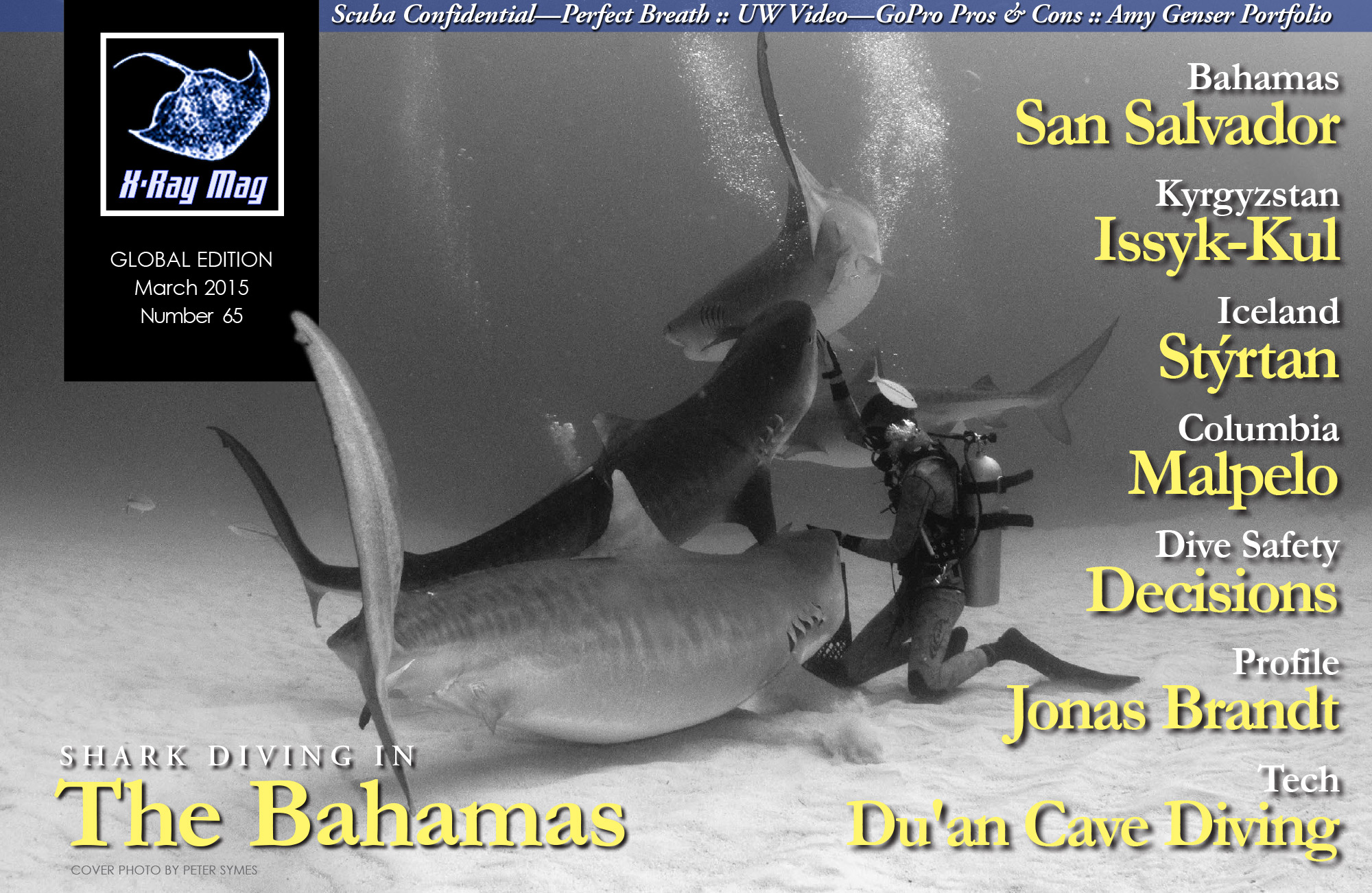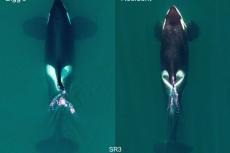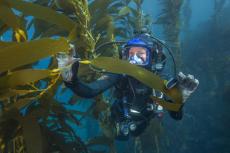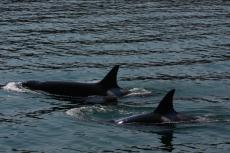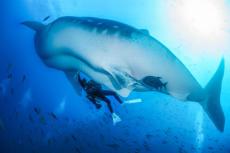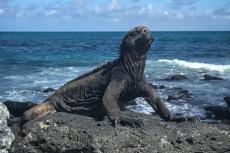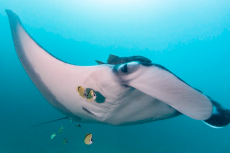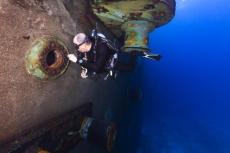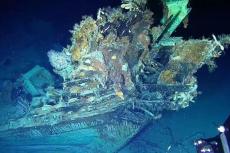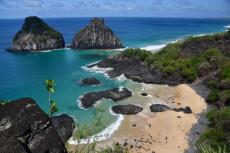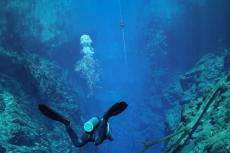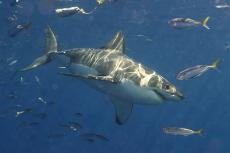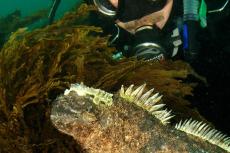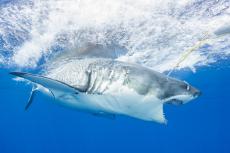The main reason for diving Malpelo Island is the sharks. The area is known for large schools of hammerheads, silky sharks, Galapagos and whitetip sharks. In the winter there is a population of sand tigers, and in late summer and fall, whale sharks call these waters their home. Other large pelagics can also be viewed. Tuna, jacks and eagle rays are not uncommon, with the occasional manta ray making an appearance.
Contributed by
The reason for all of this large life is an abundance of food being brought in by strong ocean currents. So diving conditions are not easy. Currents could be very strong and visibility clouded by all the nutrients in the water. But this is the price to pay for hanging out with the big boys. Two hundred and thirty miles from Panama and 270 miles from the coast of Columbia is the large rock rising from the Pacific Ocean that is Malpelo Island. The rock itself is home to a small Columbian military base, ranger station and colony of sea birds.
A number of boats from Panama and Columbia run trips to Malpelo. Leaving from Panama the journey takes 30 hours, depending on current and wind. Leaving Panama in the late afternoon on a Monday, one will not see land until sometime on Wednesday. It is not unusual for sea conditions and weather to be rough. So it is nice to be on a comfortable seaworthy vessel. During the journey, there is time to relax, make new friends and dream about the wonders that will soon be seen below the surface. There is plenty of time to setup scuba gear and cameras.
Before long the rock appears in the distance. As time goes by, it slowly starts getting larger and larger. Before your eyes appears a magical enchanted land. When Robert Lewis Stevenson wrote Treasure Island, he must have been thinking of Malpelo. This looks like the perfect place for pirates to hide treasure. All the diving on Malpelo is done around the rock and nearby pinnacles. If you removed all the large marine life, this would still be a world-class dive site. Sea fans and other soft coral decorate the rock. There are more moray eels here, than we have ever seen. Many are free swimming even in the daylight hours.
Leatherback grouper and Mexican hogfish are everywhere. These fish along with butterflyfish also perform a useful service for the big pelagics. The marine life on all the rock reefs are cleaning stations. Sharks and other large animals come in to have the parasites, dead skin and loose scales removed from their mouths and bodies. The butterflyfish and other cleaners use these parasites as food and don’t get eaten. Diving on a cleaning station offers the opportunity to observe these animals. Once arriving, divers do a check out dive at El Altar de Virginia. This site is in a protected area and there is not much current. Divers do a backward roll from the small skiff.
Diving
Coiba Dive Expeditions goes to Malpelo more often than other operations. Their liveaboard vessel is the 115-foot (35m) Yemaya’ II. The ship has eight comfortable staterooms plus crew quarters. The diving station is on the lower deck while the top deck is for dining and socializing. Half of the top deck is covered while the other half has lounge chairs for enjoying the sun. There is an indoor salon with a TV, video and book library. Two skiffs are towed behind the ship. All diving takes place from the skiffs. Nitrox 32 is produced from a membrane system and whips are used to fill tanks without removing them from the skiffs.
All diving is done in groups. The dive guide counts, “Uno, dos, tres!” and everyone rolls in at the same time. Doing this comfortably with a camera housing and strobes takes some practice. After seeing the first cleaning station and a large school of hammerheads in the distance, it is time to surface. Everyone is asked to deploy a surface marker buoy (SMB) for practice. From now on, many dives will be in a current, so a negative entry is necessary. With BCs empty everyone rolls in at the same time and frantically swims to the rock before the current wipes them away. If everything goes right, the group stays together and the dive guide shoots the surface marker buoy at the end of the dive. If someone gets separated, they have their own reel and SMB.
The boat supplies Nautilus Lifelines to all the divers. This device invented by Nautilus Explorer owner, Mike Lever, is prefect for this diving environment. It is a combination radio and GPS. The lifeline has three buttons. The green button allows a diver to chat with the boat and skiff. The GPS numbers are displayed. If you are lost, you can tell the skiff driver where you are located. The orange button allows a diver to communicate on Channel 16. This channel is reserved for emergencies and is monitored by all vessels. This way divers can tell any nearby ship their location.
The red button will keep transmitting a diver’s location to all stations, but divers are not able to talk when using this function. Having a Nautilus Lifeline on all dives will give one a warm and fuzzy feeling, but this device is a requirement when diving remote locations in these conditions.
Conditions
In August 2014, El Nino was affecting the area. With water temperatures in August being between 76ºF and 87ºF (24-31ºC), it was comfortable to dive in a 3-5mm wetsuit. These warm temperatures push the hammerheads and other sharks away from the wall. They seek out cooler waters away from Malpelo. At times we hit a thermocline where the cold water and warm water mixed, creating a hazy look of gauze in the water.
Once on the bottom, everyone lined up looking into the blue—hoping to get a glimpse of a school of hammerheads or other pelagic animals. We felt like we were at a theatre waiting for the show to begin. If everyone stays close together the bubbles will scare away the animals. By spreading out and being observant, divers might get to see a shark or eagle ray. Because of the current, it is important to not get too far away from the dive guide. Also keep an eye out behind you. While everyone is looking for the actors to appear on the stage, sometimes one might sneak back to perform in the balcony.
If no sharks appear, the group swims, or drifts in the current, to a different area. While looking for the large animals, don’t get tunnel vision and forget about the rocks. Spanish grunts, giant hawkfish, coral hawkfish, puffers and other creatures put on a colorful show.
Dive sites
There are many dive sites around the island. There is an area in the rock that looks like a face staring down at you. The dive site below the face is known as La Cara de Fantasma, or the ghost face. The skiff ride could be as interesting as the dive. It is possible to see bait balls and humpback whales breaching close to the tiny boat. La Gringa is a site named because a dive instructor from the United States had a butt the size and shape of the rock. But the great feature of this site is a long swim-through. Fish of all kinds are inside this rocky passageway. On the other side of the swim-through, one might spot a large school of hammerheads.
One of the other dive sites of note was the Aquarium. Current varied from strong to insane, but at least the dive staff deployed a buoy decent line for reference. At the time of our visit, a male and pregnant female whale shark could be seen on this site. To have a 30-foot (9m) fish swim overhead and block out the sun, then swim down and look you in the eye was a life-changing experience. These gentle plankton eaters were as curious about the divers as the divers were curious about them. It was hard to tell who was watching whom, but the whale sharks did not have cameras. After the diving days were finished, it was time for the long ride back to the mainland. There was now time to relax, socialize with new friends, pack gear and dream about the incredible wonders we just experienced under the surface.
Topside attractions
When planning a trip to Malpelo, one should also plan to explore Panama. Both the city and the remote areas have much to offer.
Panama City.
Panama City is an important town since the Panama Canal allows ships quick access between the Pacific and Atlantic Oceans. Before the canal was built, ships had to go around South America to make the trip. At the ports, trains would transport cargo across the narrow country to the other side. Then the containers were distributed onto ships going to different locations. The first ship entered the canal on 15 August 1914.
The influence of the United States is everywhere. This is because the United States had complete control of the Panama Canal from 1914 to 1979. From 1979 to 1999, the canal was under joint American–Panamanian management. In 1999 the canal was handed over to the Panama Canal Authority, a Panamanian government agency. But the U.S. dollar is still the local currency, and 110v with North American outlets are still used for power.
Panama City is a study of contrast. The new city has modern skyscrapers with a variety of quirky architecture. One building has a twist while another is designed to look like a ship, influenced by the Burj Khalifa skyscraper in Dubai. Many of these buildings are residential. This modern skyline can be seen from the water with a fleet of traditional fishing boats sitting in the foreground. Old Town Panama City has the look and feel of many cities in Spain, combined with a flavor of New Orleans in the United States. Colorful buildings with shops, restaurants and bars line the narrow streets. There are many squares and public areas for people to gather and enjoy the hot tropical weather. Around the squares are churches and government buildings.
Visual arts play an important roll in the life of the Panamanian people. Parades, public events and parties always include a host of decorated floats. On our visit, a number of artists could be seen working on these floats into the evening through open doorways. School buses purchased second hand from the United States were used as public transportation. Artists used the buses as canvases for their work. Known as diablos rojos (red devils) they are now being replaced with modern buses. But some of these buses are still on the road.
Gamboa.
Gamboa is a town near Panama City that was populated by people from the United States. It is now an international community with a pristine rainforest in its backyard. The canal needs millions of gallons of water to feed its lock system. For this reason the rainforest has been preserved to provide water. The Smithsonian Institute maintains their tropical research facility in Gamboa. The institute’s mission is to understand the past, present and future of tropical biodiversity and its relevance to humankind.
This is where the scenic Chagres River meets the Panama Canal forming Gatun Lake. A boat tour with kayaking was an excellent way to explore this area. It was interesting to see the contrast of dredging and other work being done on the canal right next to a tropical wonderland where a variety of birds, monkeys and reptiles could be observed. Snail kites could be seen looking out for their prey.
One of the highlights was being able to get up close to the rufous-naped tamarin, also known locally as the Mono Titi monkey. This is the smallest monkey found in Panama. Bringing our kayaks close to the tress, we could observe Titi monkeys running, galloping and leaping from tree branch to tree branch. They did not hang from their tails but used them for balance.
Soberania National Park.
Hiking in Soberania National Park is another way to observe life in the rainforest. As we walked on the main trail, we heard the sounds of many different birds. Part of life in the rainforest is hiding, trying not to become a meal. So seeing these birds needs patience. The way the light filtered through the trees was magnificent. As our eyes adjusted, we began to see movement in the trees. Magnifying the spectacle with binoculars or a telephoto lens, we could spot a community of mantled howler monkeys.
Howlers are among the largest monkeys in Panama. We could see them hanging, climbing and leaping on the tree branches. Sometimes they walked upside down and wrapped their tails around the tree. Their prehensile tails are strong enough to support their entire body weight. Vocal communication was an important part of the howlers’ social behavior. When they barked, we felt like King Kong was coming down from the trees to kidnap us—just like what happened to Faye Ray.
Guna region.
One third of the Caribbean side of Panama is the Guna region. The population of these indigenous people is round 40,000. The name was Kuna until 2012, when the spelling was changed to Guna. The Guna region starts at the Continental Divide and continues offshore to a chain of about 360 coral reef islands that stretch along the coast down to Columbia. The tourist industries call these islands the San Blas Islands, but the locals know them as Guna Yala. Yala translates to mountain and land.
In the past, the Panamanian government tried to dominate Guna culture, suppressing traditional customs in order to control the people. In 1925 the Dule Revolution resulted in a treaty in which the Panamanians agreed to recognize the Guna people’s cultural freedom and semi-autonomy of the well-functioning traditional democracy they maintain. The Guna religion is called Baba and is based on nature, involving a Father Baba and a Mother Earth. The governmental process in the big meetings of the Guna includes (religious) metaphors of their view of the world.
Artwork known as Molas decorate the blouses of the Guna women and are used as the base for clothing. The designs replace what used to be body paint. The women wear attractive beadwork on their legs known as Wini. The men farm, collect coconuts and fish. Scuba diving is illegal for both locals and tourists, but many Guna men are excellent freedivers and spearfishers. The women are the owners of their houses and many of them manage businesses. They create the Molas and Wini. Preparing the fresh food and cooking is a part of their activity.
Many Gunas used to work on the U.S. bases in the former Canal Zone. Having a strong sense of community, money was sent back home to build schools and hospitals. Now many are professionals, working in Panama City. The Guna people have a history of selling goods through family-owned venues. They place a strong emphasis on economic success. Small retail stores owned by the Guna people sell Molas throughout Panama and abroad. Coconuts and lobster are important exports. Colombian trade boats buy a hundred coconuts from the Guna for US$30. Tourism is now a big part of the Guna economy. The tradition of trade and self-determination is one of the reasons the Gunas have been able to successfully function independently, compared to other indigenous groups.
Afterthoughts
An adventure to Malpelo Island and a tour through Panama offers so many unique experiences. Diving with a variety of sharks and other pelagic marine life and then having encounters with the wildlife in the rainforest is a well-rounded trip for which it is well worth spending as much time as possible to enjoy. ■
The authors wish to thank Coiba Dive Expeditions (www.coibadiveexpeditions.com) and the crew of the Yemaya’ II, as well as Yala Tours Panama (www.yalatourspanama.com). Larry Cohen and Olga Torrey are well-traveled and published underwater photographers based in New York City, USA. They offer underwater photography courses and presentations to dive shops, clubs and events. For more information, visit: Liquidimagesuw.com.

